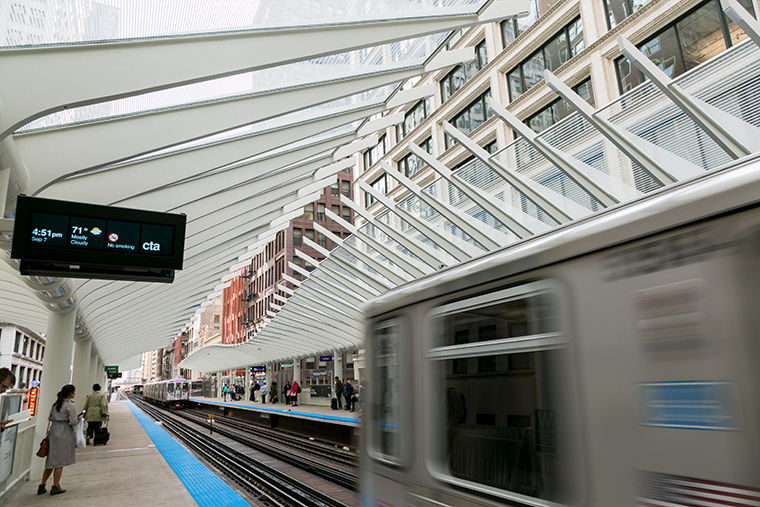New CTA station upgrades the Loop
September 11, 2017
A state-of-the-art elevated train station at Washington/Wabash is a showpiece for the city, but a small step in the revitalization of Chicago’s transit system, which has a long way to go before its completion, according to local transportation experts.
The $75 million station opened Aug. 31 after a two-year construction period. The new facility is the “best of Chicago’s heritage of architectural innovation and ingenuity,” according to Mayor Rahm Emanuel in an Aug. 31 press release.
The design features four elevators, an escalator, a wider platform, more security cameras for better coverage and ADA accessibility. It is expected to move about 10,000 people a day, according to the press release.
The Pink, Green, Brown, Orange, and Purple Line Express station is expected to be one of the top ten busiest rail stations in the CTA. Kyle Whitehead, government relations director at the Active Transportation Alliance—a nonprofit organization that advocates for improved biking, walking and transit conditions throughout the city—said that it is an “exciting improvement for the transit system.”
The station needed an update because, like most CTA train stations, it was stuck 20 years in the past, said Joseph Schwieterman, a transportation professor at DePaul University. The new station takes the place of two former el stops, Madison/Wabash and Randolph/Wabash, and improves traffic flow by reducing stops, he added.
“Our system is great, but our stations are mostly a little tired,” Schwieterman added.
The station is one of 46 other CTA train stations to be updated throughout the city, said Mike Claffey, spokesman for the Chicago Department of Transportation. The Red and Purple lines are up next for renovation as federal funding has been allocated for modernization, he added.
Earlier this year, Chicago received a $1 billion federal grant from former President Barack Obama—and plans to match it with local funding—to revamp the Red and Purple line stations north of Belmont, as reported Jan. 23 by The Chronicle.
“It’s great to have federal support for infrastructure like this,” Claffey said. “We’re going to continue to invest in [it].”
While the architecture at Washington/Wabash is thought to be beautiful, it will not be at every station because the design does not fit every location, especially at neighborhood stops, Whitehead said.
“There certainly won’t be [enough] funding to make every station look nearly this nice,” Schwieterman said.
The CTA has been doing a great job of getting the most out of every dollar, Schwieterman said. The city must acknowledge the different needs at each station because they can vary, he added.
Whitehead noted that CTA project funding does not come easily because the city has been trying to match the available federal funding with local funding.
“[Federal funding] has been readily available to regions like ours for many years, [but] what’s limited our ability to access it even more than we do already is coming up with that local funding,” he said.
With other projects in the works, Emanuel’s $8 billion investment in the transit system—which was announced in a Jan. 9 press release—will help secure federal funding and bring new life to the CTA.
“The Loop has a new lease on life.” Schwieterman said. “Improved flow of trains will encourage people to leave their cars at home and hop on the el.”








